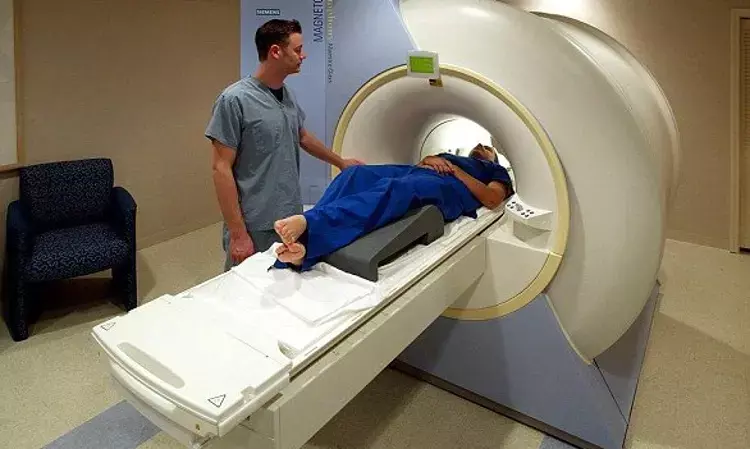- Home
- Medical news & Guidelines
- Anesthesiology
- Cardiology and CTVS
- Critical Care
- Dentistry
- Dermatology
- Diabetes and Endocrinology
- ENT
- Gastroenterology
- Medicine
- Nephrology
- Neurology
- Obstretics-Gynaecology
- Oncology
- Ophthalmology
- Orthopaedics
- Pediatrics-Neonatology
- Psychiatry
- Pulmonology
- Radiology
- Surgery
- Urology
- Laboratory Medicine
- Diet
- Nursing
- Paramedical
- Physiotherapy
- Health news
- Fact Check
- Bone Health Fact Check
- Brain Health Fact Check
- Cancer Related Fact Check
- Child Care Fact Check
- Dental and oral health fact check
- Diabetes and metabolic health fact check
- Diet and Nutrition Fact Check
- Eye and ENT Care Fact Check
- Fitness fact check
- Gut health fact check
- Heart health fact check
- Kidney health fact check
- Medical education fact check
- Men's health fact check
- Respiratory fact check
- Skin and hair care fact check
- Vaccine and Immunization fact check
- Women's health fact check
- AYUSH
- State News
- Andaman and Nicobar Islands
- Andhra Pradesh
- Arunachal Pradesh
- Assam
- Bihar
- Chandigarh
- Chattisgarh
- Dadra and Nagar Haveli
- Daman and Diu
- Delhi
- Goa
- Gujarat
- Haryana
- Himachal Pradesh
- Jammu & Kashmir
- Jharkhand
- Karnataka
- Kerala
- Ladakh
- Lakshadweep
- Madhya Pradesh
- Maharashtra
- Manipur
- Meghalaya
- Mizoram
- Nagaland
- Odisha
- Puducherry
- Punjab
- Rajasthan
- Sikkim
- Tamil Nadu
- Telangana
- Tripura
- Uttar Pradesh
- Uttrakhand
- West Bengal
- Medical Education
- Industry
Magnetic Resonance Imaging may act as a Diagnostic Tool for Periodontal Disease

Researchers have recently observed that when correlated with the clinical findings an magnetic resonance imaging (MRI scan) may be helpful in the early detection of periodontitis. Moreover, MRI was able to depict intraosseous changes before any osseous defect had occurred, according to a study published in the Journal of Clinical Periodontology.
Imaging showed patients with positive bleeding-on-probing tests faced a greater risk of already having bone edema around those teeth, even with probing pocket depths classified as having minimal risk for periodontal disease, the authors wrote.
Monika Probst and colleagues from the Department of Diagnostic and Interventional Neuroradiology, Klinikum rechts der Isar, Technical University, Munich, Germany carried out the study to evaluate the correlation between standard clinical findings, radiographic (OPT) and magnetic resonance imaging (MRI) as well as to assess whether MRI is capable of providing additional information related to the severity and extent of periodontal disease.
"Osseous edema may serve as surrogate marker for early stages of periodontal disease and MRI may have possibilities for new options for detection, decision making and monitoring of periodontitis," described Dr. Monika Probst, the lead authors of the study.
The authors evaluated a total of 42 patients with generalized periodontitis, all of whom had received pre‐interventional MRI scans. These were compared to MR‐images of a periodontal healthy control group (n=34). The extent of the osseous edema, detected by MRI, was set in correlation with clinical periodontitis associated findings.
The findings drawn from the study revealed that -
a. A highly significant correlation between bone edema and clinical testings such as probing depth (p<0.0001) and bleeding on probing (p<0.0001) was revealed.
b. The edema exceeded the extent of demineralized bone.
c. Patients with a positive BOP test showed a 2.51 fold increase in risk of already having a bone edema around the respective tooth even if probing depth was ≤ 3 mm. (Logistic binary regression analysis, OR 2.51; 95% CI: 1.54‐4.11; p<0.0001).
It was hence, concluded that "MRI findings correlated with standard clinical findings, and MRI was able to depict intraosseous changes before any osseous defect had occured."
Dr. Nandita Mohan is a practicing pediatric dentist with more than 5 years of clinical work experience. Along with this, she is equally interested in keeping herself up to date about the latest developments in the field of medicine and dentistry which is the driving force for her to be in association with Medical Dialogues. She also has her name attached with many publications; both national and international. She has pursued her BDS from Rajiv Gandhi University of Health Sciences, Bangalore and later went to enter her dream specialty (MDS) in the Department of Pedodontics and Preventive Dentistry from Pt. B.D. Sharma University of Health Sciences. Through all the years of experience, her core interest in learning something new has never stopped. She can be contacted at editorial@medicaldialogues.in. Contact no. 011-43720751
Dr Kamal Kant Kohli-MBBS, DTCD- a chest specialist with more than 30 years of practice and a flair for writing clinical articles, Dr Kamal Kant Kohli joined Medical Dialogues as a Chief Editor of Medical News. Besides writing articles, as an editor, he proofreads and verifies all the medical content published on Medical Dialogues including those coming from journals, studies,medical conferences,guidelines etc. Email: drkohli@medicaldialogues.in. Contact no. 011-43720751


